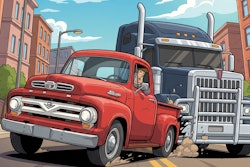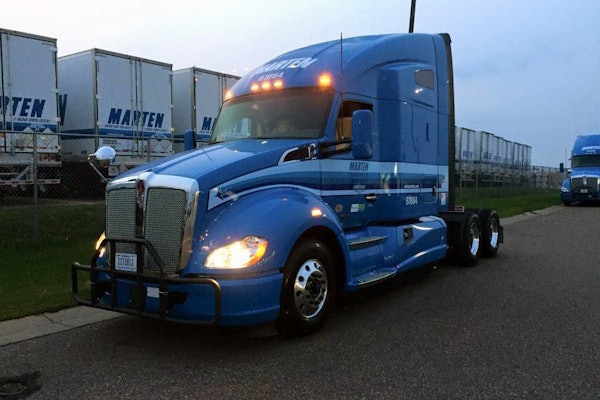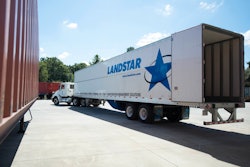The stage was set for a fatal accident. It was 5:45 a.m. with almost no light coming from the overcast sky. Rain had fallen within the past hour, and the road was wet. John Doe was southbound at a legal 53 mph in a tractor-trailer rig along a two-lane asphalt road in rolling terrain in a Western state.
Shortly after Doe crested a hill, he suddenly saw a dark-colored cow standing in the middle of his southbound lane. He applied his brakes instantly, nearly locking the wheels, 130 feet away from the cow. Unfortunately for the cow, it wasn’t soon enough. It was thrown 80 feet down the highway from the point of impact and killed. The tractor-trailer traveled an additional 50 feet from the impact point, 10 feet into an intersection. The unit ended up jack-knifing and coming to rest with the trailer nearly in the middle of the intersection and the tractor straddling the cross street coming from the right.
The company’s accident committee ruled the accident preventable. Partly owing to the fact that the cow was “mostly black” and therefore extremely hard to see, and considering the fact that John was a member of the National Safety Council’s Million Mile Club, John and his terminal supervisor felt the judgment was completely unfair.
All the data was submitted to the National Safety Council’s Accident Review Committee for review. John’s supervisor noted in a cover letter that John’s tractor was equipped with an onboard computer that documented a sustained speed of 53 mph, below the legal limit for the road, and showed that he applied the brakes well before impact. The supervisor added that the tractor was equipped with halogen headlamps, which he had every reason to believe John would not have been over-driving at 53 mph. He concluded that John was driving defensively, applied the brakes as soon as he saw the animal, and attempted to avoid it by steering evasively.
The Review Committee decided that the visibility issue was clouded by the high probability that the headlamps were dirty because of the wet road conditions, meaning John was probably overdriving his headlamps despite their high output under ideal conditions. It also ruled that, even though John was traveling at a speed that was legal (at least under normal road conditions), he was driving too fast for a dark, rain-slicked road in stormy weather. Moreover, John was approaching a crossroads, from which surprises commonly emerge. That meant he should have slowed, even from an appropriate cruising speed. Too bad for John Doe – the committee decided the “preventable” judgment was appropriate.







